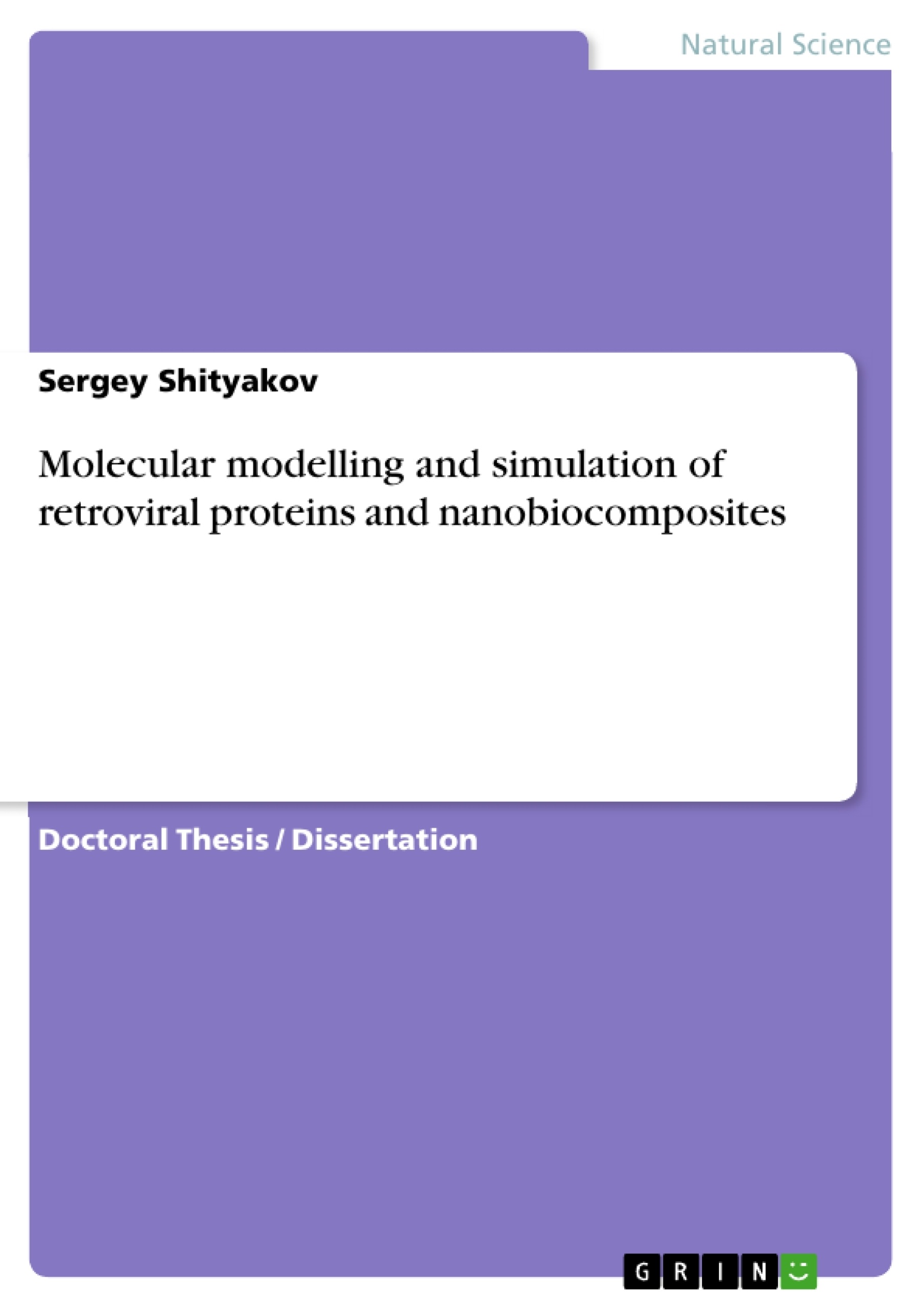HIV-1 integrase has nuclear localization signals (NLS) which play a crucial role in nuclear import of viral preintegration complex (PIC). However, the detailed mechanisms of PIC formation and its nuclear transport are not known. I investigated the interaction of this viral protein HIV-1 integrase with proteins of the nuclear pore complex such as transportin-SR2 (Shityakov et al., 2010). I showed that the transportin-SR2 in nuclear import is required due to its interaction with the HIV-1 integrase. I analyzed key domain interaction, and hydrogen bond formation in transportin-SR2.
In this thesis, I compared the transduction frequencies of PPT modified FV vectors with lentiviral vectors in nondividing and dividing alveolar basal epithelial cells from human adenocarcinoma (A549) by using molecular cloning, transfection and transduction techniques and several other methods. In contrast to lentiviral vectors, FV vectors were not able to efficiently transduce nondividing cell (Shityakov and Rethwilm, unpublished data). Despite the findings, which support the use of FV vectors as a safe and efficient alternative to lentiviral vectors, major limitation in terms of foamy-based retroviral vector gene transfer in quiescent cells still remains.
In computational drug design I used molecular modelling methods such as lead expansion algorithm (Tripos®) to create a virtual library of compounds with different binding affinities to protease binding site. Further computational analyses revealed one unique compound with different protease binding ability from the initial hit and its role for possible new class of protease inhibitors is discussed (Shityakov and Dandekar, 2009).
The phenomenon of an intercalated single-wall carbon nanotube in the centre of lipid membrane was extensively studied and analyzed. The root mean square deviation and root mean square fluctuation functions were calculated in order to measure stability of lipid membranes.
The results indicated that an intercalated carbon nanotube restrains the conformational freedom of adjacent lipids and hence has an impact on the membrane stabilization dynamics (Shityakov and Dandekar, 2011). The results derived from this thesis will help to develop stable nanobiocomposites for construction of novel biomaterials and delivery of various biomolecules for medicine and biology.
Inhaltsverzeichnis (Table of Contents)
- General introduction
- Motivation for present research
- 1 Structural and docking analysis of HIV-1 integrase and Transportin-SR2 interaction: Is this a more general and specific route for retroviral nuclear import and its regulation?
- 1.1 Overview
- 1.2 The problem to solve
- 1.3 Computational methods
- 1.3.1 Structural analysis software
- 1.3.2 Sequence analysis software
- 1.3.3 Docking programs
- 1.4 Results and discussion
- 1.5 Conclusions
- 2 Role of the central polypurine tract in retroviral nuclear import (analysis of the HIV-1 central polypurine tract in a foamy virus vector background)
- 2.1 Overview
- 2.2 A molecular biology challenge
- 2.3 Materials and methods
- 2.3.1 Materials and solutions
- 2.3.2 General molecular genetics methods
- 2.3.3 General cell biology methods
- 2.4 Results and discussion
- 2.5 Conclusions
- 3 Lead expansion and virtual screening of Indinavir derivate HIV-1 protease inhibitors using pharmacophoric - shape similarity scoring function
- 3.1 Overview
- 3.2 The strategy
- 3.3 Computational methods
- 3.3.1 HIV-1 subtype C protease and Indinavir structures
- 3.3.2 Protease active site detection
- 3.3.3 Compound library generation
- 3.3.4 ADME/Tox Studies
- 3.3.5 Protein-ligand docking
- 3.3.6 Construction of pharmacophore models
- 3.4 Results and discussion
- 3.5 Conclusions
- 4 Molecular dynamics simulation of POPC and POPE lipid membrane bilayers enforced by an intercalated single-wall carbon nanotube
- 4.1 Overview
- 4.2 The simulation and its goals
- 4.3 Computational methods
- 4.4 Results and discussion
- 4.5 Conclusions
Zielsetzung und Themenschwerpunkte (Objectives and Key Themes)
This dissertation explores the molecular mechanisms behind retroviral protein function and the development of novel antiviral therapies using computational modeling and simulation. The study aims to provide a deeper understanding of retroviral protein interactions and their impact on viral replication, as well as to contribute to the discovery of new drug targets and inhibitors.
- Nuclear import of retroviral proteins and the role of specific interactions
- Computational analysis of protein-protein interactions and their significance for viral replication
- Development of novel inhibitors for HIV-1 protease based on pharmacophore modeling and virtual screening
- Molecular dynamics simulation of lipid membrane bilayers interacting with carbon nanotubes
- Potential applications of computational methods in drug discovery and biomedical research
Zusammenfassung der Kapitel (Chapter Summaries)
- Chapter 1 focuses on the structural analysis of HIV-1 integrase and its interaction with Transportin-SR2, a key protein involved in nuclear import. The chapter investigates the possibility of a general route for retroviral nuclear import and explores the potential for regulating this process.
- Chapter 2 delves into the role of the central polypurine tract in retroviral nuclear import. The chapter examines the functionality of the HIV-1 cPPT in a foamy virus vector background and analyzes its contribution to viral replication.
- Chapter 3 describes the development of novel HIV-1 protease inhibitors using pharmacophoric - shape similarity scoring function. The chapter explores the potential of Indinavir derivates as lead compounds and investigates their interactions with the HIV-1 protease active site.
- Chapter 4 presents the results of molecular dynamics simulations of POPC and POPE lipid membrane bilayers in the presence of an intercalated single-wall carbon nanotube. The chapter investigates the structural and dynamic properties of this system and explores the impact of the nanotube on membrane properties.
Schlüsselwörter (Keywords)
The main keywords and focus topics of this dissertation include HIV-1 integrase, Transportin-SR2, retroviral nuclear import, central polypurine tract, HIV-1 protease, Indinavir, pharmacophore modeling, virtual screening, molecular dynamics simulation, lipid membrane bilayers, carbon nanotubes, antiviral therapy, drug discovery, and computational modeling.
- Arbeit zitieren
- Sergey Shityakov (Autor:in), 2011, Molecular modelling and simulation of retroviral proteins and nanobiocomposites, München, GRIN Verlag, https://www.grin.com/document/173123



